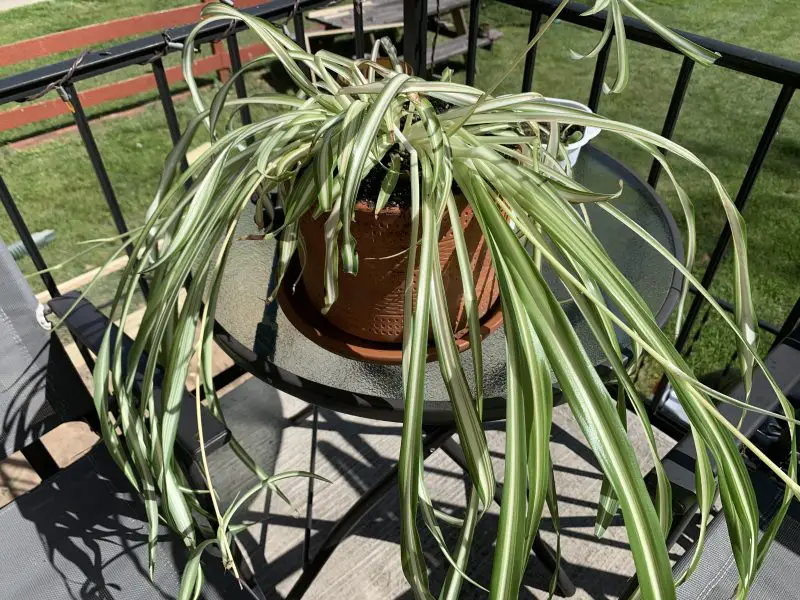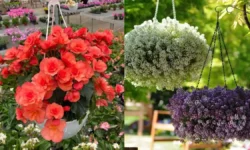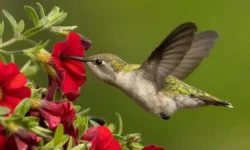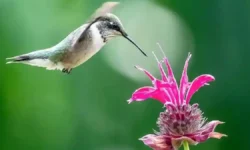Spider plants (Chlorophytum comosum) are beloved houseplants known for their arching green-and-white striped leaves and easy-care nature. They are hardy, adaptable, and perfect for beginners, but even the toughest plants can sometimes show signs of stress. One common problem many plant owners encounter is drooping or wilting leaves. A drooping spider plant is not just an aesthetic issue; it signals that something is wrong with its growing conditions. Understanding the reasons behind this issue is the first step toward bringing your plant back to health.
In this guide, you will learn why spider plants droop, how to identify the underlying cause, and the best methods to revive them quickly.
Table of Contents
Understanding Why Spider Plants Droop

A healthy spider plant has firm, upright, and vibrant leaves that cascade gracefully from the center. When the leaves begin to droop, curl, or look limp, it indicates that the plant is under stress. The cause can range from environmental factors such as watering issues, light conditions, or temperature fluctuations to internal factors like root health and pest infestations.
The key to reviving a drooping spider plant is identifying the root cause early. Once you know what is causing the stress, you can adjust care accordingly to help the plant recover quickly and return to its lush, vibrant state.
Common Causes of Drooping Spider Plants
Overwatering and Root Rot
Overwatering is one of the most frequent causes of drooping spider plants. While they enjoy evenly moist soil, excess water can suffocate the roots, leading to root rot. Damaged roots lose their ability to absorb water and nutrients, causing the leaves to wilt and droop. If the soil feels soggy or has a foul smell, root rot is likely the problem.
Underwatering and Dehydration
On the other end of the spectrum, underwatering can also cause drooping. Spider plants store some moisture in their thick roots, but prolonged drought stress leads to shriveled, limp leaves. Dry, compacted soil that pulls away from the pot’s edges is a sign your plant is thirsty.
Incorrect Lighting Conditions
Spider plants thrive in bright, indirect light. Too little light causes slow growth and drooping as the plant struggles to produce energy. Excessive direct sunlight, on the other hand, scorches the leaves, leading to limp, brown-tipped foliage.
Temperature Stress and Drafts
Sudden temperature changes or exposure to cold drafts can shock the plant, causing the leaves to droop. Spider plants prefer temperatures between 65°F and 75°F. Prolonged exposure to heat or cold outside this range weakens the plant’s overall health.
Nutrient Deficiency
A lack of essential nutrients can lead to weak, limp leaves. Spider plants require balanced nutrients to maintain firm, green foliage. Yellowing or pale drooping leaves often indicate a nitrogen deficiency or exhausted soil that needs fresh nutrients.
Pests and Diseases
Pests like spider mites, aphids, or mealybugs suck sap from spider plant leaves, causing them to wilt and droop. Infestations often come with sticky residue, webbing, or tiny visible insects on the undersides of leaves.
Root Bound Conditions
As spider plants grow, their roots can outgrow the pot, becoming tightly packed and root bound. This restricts water and nutrient absorption, leading to drooping leaves. If roots are growing out of the drainage holes, it’s time to repot.
How to Revive a Drooping Spider Plant Quickly
Adjusting Watering Habits
Correct watering is the first step in reviving a drooping spider plant. Check the soil moisture before watering. If overwatering is the issue, let the soil dry out completely before the next watering, and ensure the pot has proper drainage. If underwatering is the problem, soak the soil thoroughly until water drains from the bottom, allowing the plant to rehydrate.
Improving Light Conditions
Move your spider plant to a location with bright, indirect light. Avoid direct sunlight, which can scorch the leaves, and steer clear of dim corners where the plant struggles to photosynthesize. An east-facing or north-facing window is ideal.
Repotting for Healthy Roots
If the plant is root bound or suffering from root rot, repotting is necessary. Choose a pot one to two inches larger than the current one, and use fresh, well-draining potting soil. Trim away dead or mushy roots with sterilized scissors before replanting.
Balancing Temperature and Humidity
Place the spider plant in a stable environment with moderate temperatures. Keep it away from cold drafts, heating vents, or air conditioners. Increasing humidity with a pebble tray or occasional misting can also help restore leaf turgidity.
Feeding With Proper Fertilizer
Feed the plant with a balanced liquid houseplant fertilizer once a month during the growing season. Avoid over-fertilizing, as salt buildup can damage roots and worsen drooping.
Treating Pests and Diseases
Inspect the plant thoroughly for pests. Wipe leaves with a damp cloth to remove insects, and treat infestations with insecticidal soap or neem oil. For severe cases, isolate the plant to prevent pests from spreading to other houseplants.
Pruning Damaged Leaves
Prune severely damaged or brown leaves to redirect the plant’s energy to healthy growth. Use clean, sharp scissors to cut leaves at the base.
Preventing Drooping in the Future
Establishing a Proper Care Routine
Consistency is key to preventing drooping. Water the plant only when the top inch of soil feels dry, maintain moderate light, and fertilize during the active growing season. Regularly inspect the plant for early signs of stress.
Regular Repotting and Soil Refreshing
Repotting every two to three years prevents the plant from becoming root bound and ensures it receives fresh nutrients from new soil. Refreshing the soil annually also helps maintain healthy root growth.
Monitoring Environmental Changes
Spider plants are sensitive to sudden changes in their environment. Gradually adjust them to new lighting or temperature conditions to reduce stress and prevent drooping.
How Long Does It Take for a Spider Plant to Recover?
The recovery time depends on the severity of the issue. Mild drooping from underwatering can improve within a few hours after proper watering, while recovery from root rot or repotting may take several weeks. Patience and consistent care are crucial during this period.
FAQs About Drooping Spider Plants
Why is my spider plant drooping after watering?
If the plant droops after watering, overwatering or poor drainage may be the cause. Check for soggy soil and allow it to dry before watering again.
Can too much sunlight cause my spider plant to droop?
Yes, excessive direct sunlight can scorch the leaves, making them limp and droopy. Bright, indirect light is best for spider plants.
How do I know if my spider plant needs repotting?
If roots are circling tightly inside the pot or growing out of drainage holes, the plant is root bound and needs repotting for healthy growth.
Will cutting brown or drooping leaves help my spider plant recover?
Pruning damaged or brown leaves helps the plant redirect energy to healthy new growth and improves its overall appearance.
How long does it take for a drooping spider plant to recover?
Recovery depends on the cause. Mild drooping can improve within days, but issues like root rot may take several weeks with proper care.
Conclusion
A drooping spider plant is a sign that something is wrong with its care or environment, but the good news is that it is highly resilient. By identifying the cause—whether it’s watering problems, lighting issues, pests, or root health—you can take quick action to revive your plant. With proper watering, bright indirect light, nutrient-rich soil, and occasional repotting, your spider plant will soon return to its vibrant, lush state, adding beauty and freshness to your indoor space.






